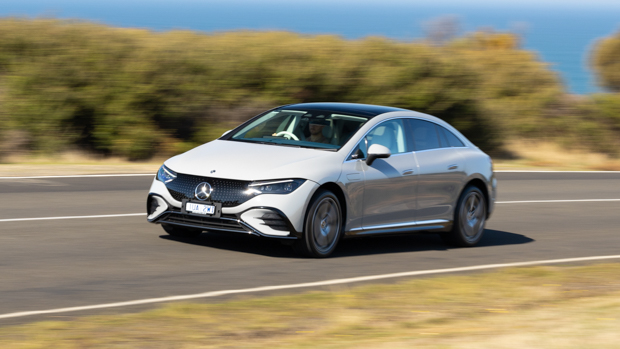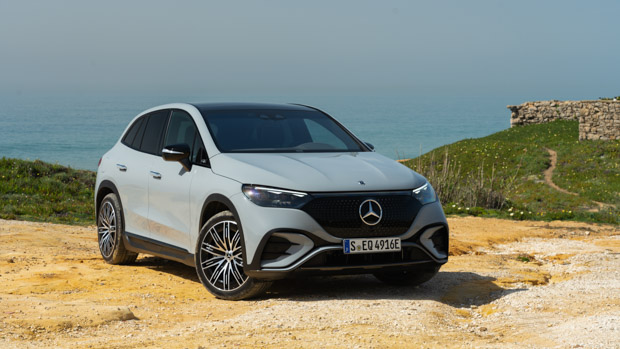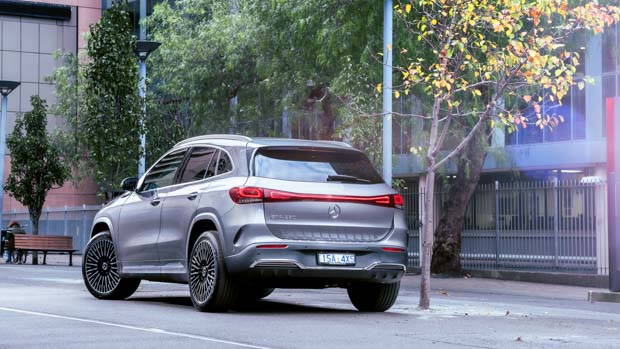-
Car Reviews
- All reviews
- Midsize SUVs
- Small cars
- Utes
- Small SUVs
- Large SUVs
- Large cars
- Sports SUVs
- Sports cars
- Vans
Latest reviews
- Car News
-
Car Comparisons
Latest comparisons
- Chasing Deals
Mercedes-Benz says it won’t chase sales volume just to meet Australia’s electric vehicle subsidy thresholds
The cheapest electric Mercedes-Benz on sale today is the EQA250 small SUV, costing $81,700 before on-road costs.
That price is very important to many potential buyers. Australia’s current luxury car tax (LCT) threshold for what it deems fuel-efficient vehicles is $84,916 for the 2022/23 financial year.
If you can drive-away an EV below that price (not easy when the EQA 250’s RRP is $81,700 with no options ticked), that makes it eligible for fringe benefits tax (FBT) exemption.
When purchased through a novated lease, not having to cover costs of any FBT incurred will save thousands.
As with all taxation, there are many rules, regulations and often confusing jargon involved, but if you know you could qualify, EVs under this LCT threshold are no doubt on your radar.
Bad news there I’m afraid.
“We don’t have the vehicle,” Mercedes-Benz Australia spokesman Jerry Stamoulis told Chasing Cars. “It’s not possible at the moment, and we’re not chasing volume. We have other vehicles which aren’t electric to bring people to the brand, and they’re doing their job.”
The EQA is currently Mercedes’ strongest selling EV, so couldn’t a cheaper, sub-EQA 250 be offered to entice buyers seeking to make use of the FBT exemption?
“To bring in something purely for an incentive, it’s not something we’re chasing,” Mr Stamoulis said. “It’s not where we play. We want to be number one in that segment against our traditional competitors; volumes are not our priority.”
The electric BMW iX1 also flirts on the cusp of the LCT threshold, much to the frustration of EV shoppers. Its initial price of $82,900 jumped to $84,900 after just three months of going on sale.
If your negotiating skills are top notch, and you can secure a dealer delivery fee of $15 or less, the iX1 would qualify as below the LCT threshold.
Mercedes-Benz, by contrast, has controversially moved to a fixed price sales model, so negotiating price with a dealer is no longer possible.
At time of writing only two EQA 250s were in stock and on sale through Mercedes-Benz Australia’s website. The cheapest was $94,300 drive-away, so would not qualify by some margin.
“A lower price would mean lower specification,” said Mr Stamoulis.
There’s an expectation, clearly, that Benz’s EQ vehicles are the next generation and must be loaded with technology and luxury. Ergo, they’re priced accordingly.
Certainly, Australian buyers have had to get used to paying more for electric equivalents of combustion models.
“Obviously people don’t want to be paying more for electric, but they understand why they do,” said Mr Stamoulis. “If they want an electric vehicle in the specific body shape we offer, that’s the car they’ll choose.”
He also added that subsidies were not the only reason a buyer might want to take the electric vehicle route.
“There are other things we know drive our customers’ interests into buying electric, such as if they’re building a new home. There are stronger incentives for solar or battery, and that’d probably be attractive for them.”
It’s clear Mercedes is unlikely to compromise its luxury levels and pricing to meet the LCT market.
Instead, hope the government raises the threshold by a few grand for next tax year instead.
Latest news
About Chasing cars
Chasing Cars reviews are 100% independent.
Because we are powered by Budget Direct Insurance, we don’t receive advertising or sales revenue from car manufacturers.
We’re truly independent – giving you Australia’s best car reviews.


